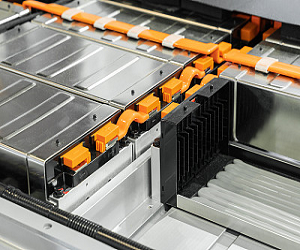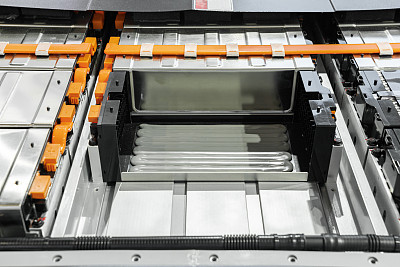News Single
Focus On Connecting And Cooling
Battery Cell Connection Technology: A Case Study of a Battery Module
- 2023-12-11
Battery Cell Connection Technology: A Case Study of a Battery Module (JADE BUSBAR)
I. Introduction
The battery module is a crucial
component in electric vehicles and energy storage systems. It consists of
multiple battery cells connected together through various methods to achieve
the desired voltage and capacity. The connection technology used in these
battery modules plays a crucial role in ensuring optimal performance, safety,
and durability. In this paper, we will discuss the various methods of connecting
battery cells in a battery module, with a focus on the pros and cons of each
method. We will also provide a case study of a specific battery module to
demonstrate the application of these connection technologies.

II. Methods of Connecting Battery Cells
- Threaded Fasteners: The threaded fasteners, such as bolts and nuts,
are commonly used to connect the battery cells. The fasteners are designed
to securely hold the cells together and provide good electrical contact.
However, this method can be time-consuming and requires regular
maintenance to ensure proper tightening.
- Cold Crimp: The cold crimp method
involves compressing the battery cell terminals using a special tool. This
method provides good electrical contact and is relatively quick to
execute. However, the cold crimp connection may not be as reliable as
other methods over time and may require regular replacement.
- Welded Joint: The welded joint method
involves melting the base metal of the battery cell terminals and joining
them together. This method provides a strong and reliable connection but
requires special equipment and skilled operators for proper execution.
- Soldering: The soldering method involves
applying a molten metal to the battery cell terminals. This method is
relatively inexpensive and easy to execute but may not provide as strong a
connection as other methods.
III. Case Study of a Battery Module
In this case study, we will examine a
specific battery module that uses the welded joint method for connecting the
battery cells. The module consists of twelve lithium-ion battery cells
connected in series using welded joints. Each cell has a capacity of 100Ah and
a voltage rating of 3.6V. The overall voltage rating of the module is 432V,
providing sufficient power for most electric vehicles.
IV. Pros and Cons of the Welded Joint
Method
The welded joint method offers several
advantages for connecting battery cells in a battery module. Some of these
advantages include:
- High strength and reliability: Welded joints provide a strong and
secure connection between the battery cells, ensuring optimal performance
over the life of the battery module.
- Elimination of mechanical stress: Welded
joints eliminate mechanical stress on the battery cell terminals, reducing
the risk of damage or failure over time.
- High electrical conductivity: Welded
joints provide excellent electrical conductivity, ensuring efficient
energy transfer between the battery cells.
- Easy to automate: Welded joints can be
easily automated using special equipment, reducing the time and cost
associated with manual connections.
However, the welded joint method also
has some disadvantages, including:
- Cost: The equipment and expertise required for welding can be
expensive, increasing the cost of producing battery modules using this
method.
- Skilled labor: Welding requires skilled
labor to ensure proper execution and connections, adding to the overall
production cost.
- Material compatibility: The welding
process may not be suitable for all types of battery cell materials,
limiting its application in some cases.
- Potential for defects: Improper welding
can lead to defects in the connection, reducing its reliability and
durability.
V .Conclusion
In conclusion, the welded joint method
is a reliable and effective method for connecting battery cells in a battery
module, offering high strength, electrical conductivity, and automation
potential. However, it requires special equipment and skilled labor, adding to
the production cost. Other methods such as threaded fasteners, cold crimp, and
soldering may offer cost-effective alternatives but may not provide the same
level of performance or reliability as the welded joint method in some cases.
The selection of the appropriate connection technology should be based on the
specific application requirements, including performance, cost, and reliability.
Summarized By Jade
Search
Categories
Contact Us
- Address: CHN SITE : Huizhou, GuangDong , China
- Phone: +00852-36283398
- Email: sales@jade-thermalloy.com
-
Monday - Friday: 9:00 am - 10:00 pm
Saturday - Sunday: Closed
Say Hey
LiveChatclose



